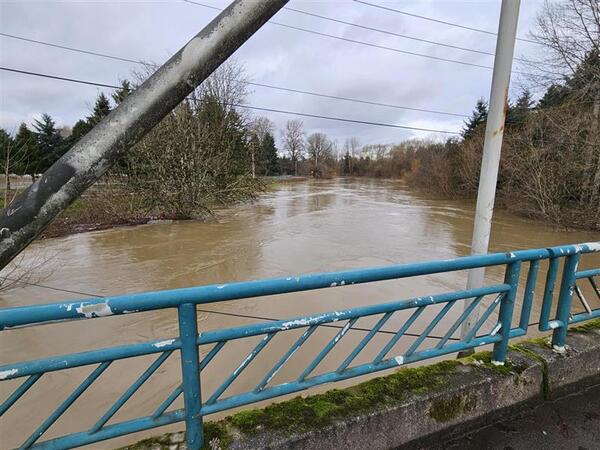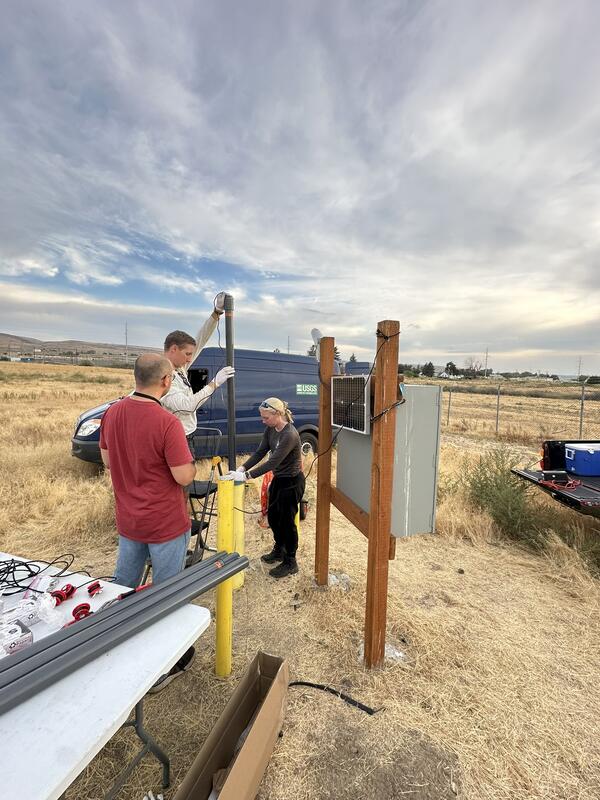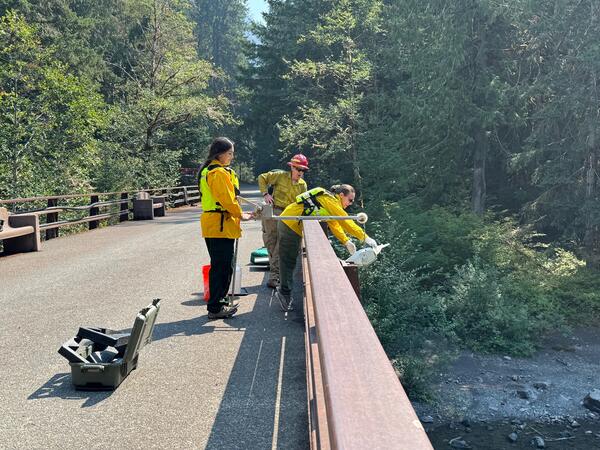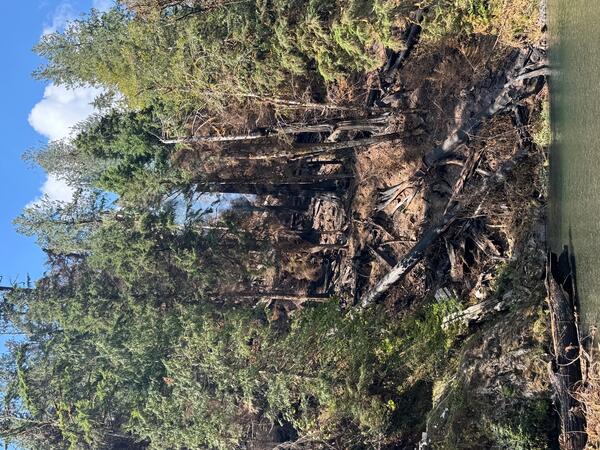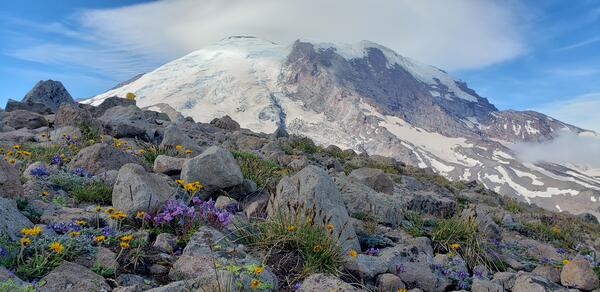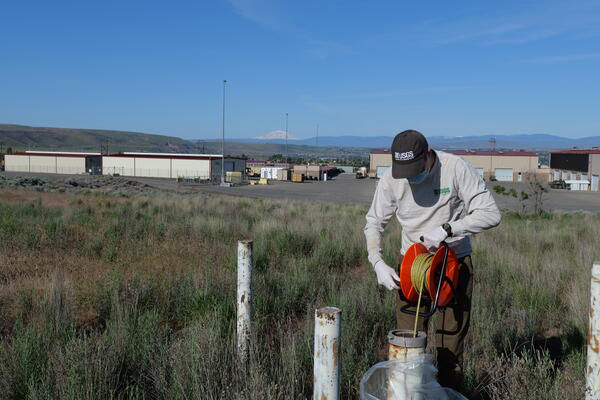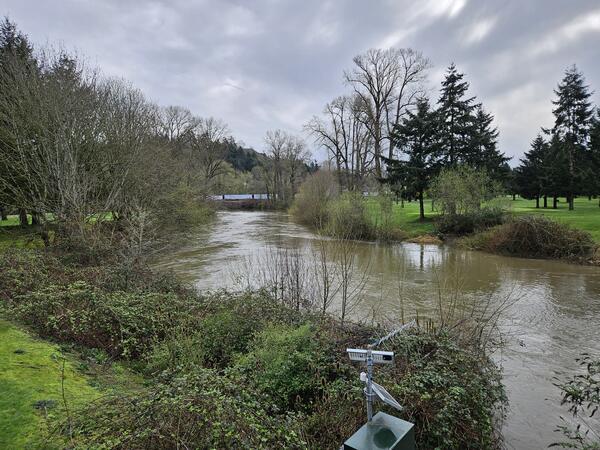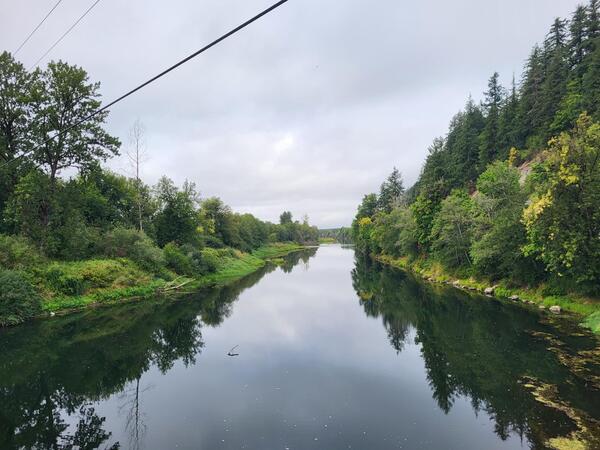USGS monitors streamflow and sediment at Green River Below Meeker ST at Kent, WA.
Images
Below are images associated with the Washington Water Science Center's science and staff. Images appear according to the year they were taken. To search, type a keyword or select a year from the dropdown menu. Or, click through the pages using the arrows at the bottom of the page.
USGS monitors streamflow and sediment at Green River Below Meeker ST at Kent, WA.
USGS monitors streamflow and sediment at the Green River Near Auburn, WA. In December 2025, a storm event raised water levels and increased the turbidity (muddiness) of the river.
USGS monitors streamflow and sediment at the Green River Near Auburn, WA. In December 2025, a storm event raised water levels and increased the turbidity (muddiness) of the river.
A hand-held sampler is used to collect suspended sediment concentration (SSC) data from Big Soos Creek, WA. SSC data helps USGS scientists understand sediment dynamics in rivers.
A hand-held sampler is used to collect suspended sediment concentration (SSC) data from Big Soos Creek, WA. SSC data helps USGS scientists understand sediment dynamics in rivers.
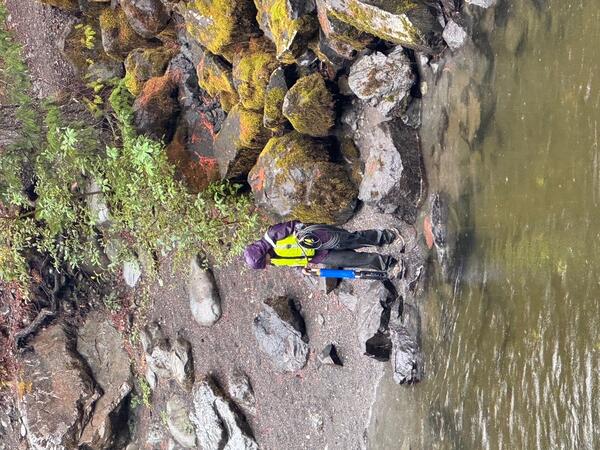
Water quality measurement on the NF Skokomish River, WA
Water quality measurement on the NF Skokomish River, WAUSGS scientist prepares to measure water quality parameters in the NF Skokomish River.
Water quality measurement on the NF Skokomish River, WA
Water quality measurement on the NF Skokomish River, WAUSGS scientist prepares to measure water quality parameters in the NF Skokomish River.
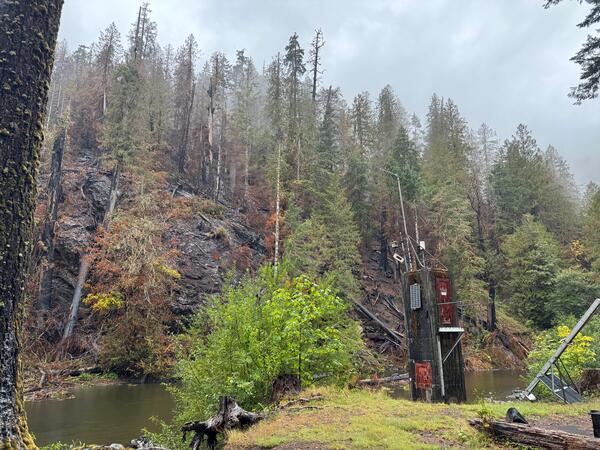
USGS NF Skokomish River streamgage near burned hillside
USGS NF Skokomish River streamgage near burned hillsideUSGS streamgage after 2025 Bear Gulch Fire.
USGS NF Skokomish River streamgage near burned hillside
USGS NF Skokomish River streamgage near burned hillsideUSGS streamgage after 2025 Bear Gulch Fire.
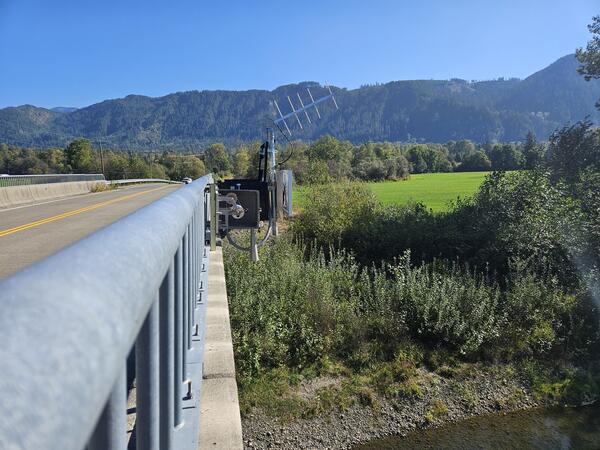
Non-contact radar sensor at the South Fork Nooksack River
Non-contact radar sensor at the South Fork Nooksack RiverNon-contact radar sensor installed at USGS Station 12210485. Real-time data are available at: South Fork Nooksack River Above Potter Bridge at Van Zandt, WA.
Non-contact radar sensor at the South Fork Nooksack River
Non-contact radar sensor at the South Fork Nooksack RiverNon-contact radar sensor installed at USGS Station 12210485. Real-time data are available at: South Fork Nooksack River Above Potter Bridge at Van Zandt, WA.
USGS scientists lower a passive flux meter into a groundwater well.
USGS scientists lower a passive flux meter into a groundwater well.
USGS and NPS scientists collect a water quality sample from the NF Skokomish River. They lower a sampling device from the bridge to obtain a representative sample. Interagency coordination allowed rapid data collection after the fire.
USGS and NPS scientists collect a water quality sample from the NF Skokomish River. They lower a sampling device from the bridge to obtain a representative sample. Interagency coordination allowed rapid data collection after the fire.
A tendril of smoke rises from a burned hillside above the NF Skokomish River. Burned trees and loose soil pose a risk for debris flows. USGS is monitoring post-fire impacts on this river.
A tendril of smoke rises from a burned hillside above the NF Skokomish River. Burned trees and loose soil pose a risk for debris flows. USGS is monitoring post-fire impacts on this river.
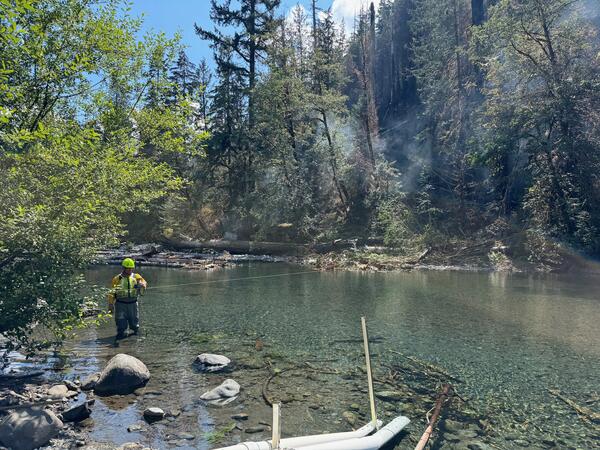
NF Skokomish River Streamflow Measurement during Bear Gulch Fire
NF Skokomish River Streamflow Measurement during Bear Gulch FireA USGS hydrologic technician measures streamflow in the NF Skokomish River (USGS 12056500) as the Bear Gulch fire smolders on the hillside.
NF Skokomish River Streamflow Measurement during Bear Gulch Fire
NF Skokomish River Streamflow Measurement during Bear Gulch FireA USGS hydrologic technician measures streamflow in the NF Skokomish River (USGS 12056500) as the Bear Gulch fire smolders on the hillside.
Wildflowers bloom on a ridge in front of Mount Rainier. The USGS monitors the volcano and studies the water produced by its glaciers.
Wildflowers bloom on a ridge in front of Mount Rainier. The USGS monitors the volcano and studies the water produced by its glaciers.
The USGS monitors water quality and streamflow at the Similkameen River Near Nighthawk, WA.
The USGS monitors water quality and streamflow at the Similkameen River Near Nighthawk, WA.
USGS monitors streamflow and sediment at Big Soos Creek Above Hatchery Near Auburn, WA.
USGS monitors streamflow and sediment at Big Soos Creek Above Hatchery Near Auburn, WA.
USGS scientists access a flush-mounted well to measure the groundwater-level.
USGS scientists access a flush-mounted well to measure the groundwater-level.
A USGS scientist uses an electronic tape to measure the depth to groundwater in a well in Washington.
A USGS scientist uses an electronic tape to measure the depth to groundwater in a well in Washington.
The USGS monitors streamflow and sediment at Duwamish River at Golf Course at Tukwila, WA.
The USGS monitors streamflow and sediment at Duwamish River at Golf Course at Tukwila, WA.
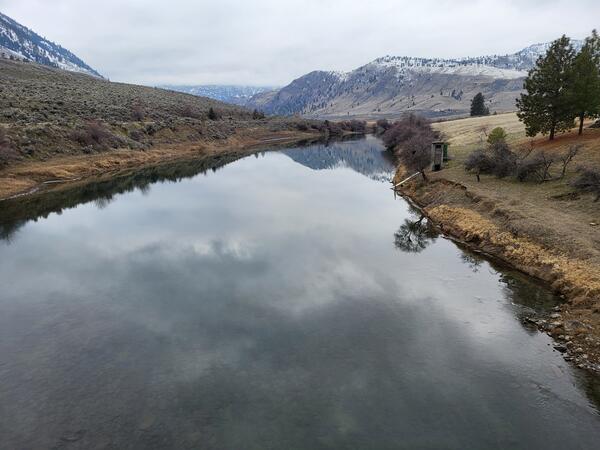
USGS Streamgage - Similkameen River Near Nighthawk
USGS Streamgage - Similkameen River Near NighthawkThe USGS monitors streamflow and water quality at the Similkameen River Near Nighthawk, WA (12442500).
USGS Streamgage - Similkameen River Near Nighthawk
USGS Streamgage - Similkameen River Near NighthawkThe USGS monitors streamflow and water quality at the Similkameen River Near Nighthawk, WA (12442500).
A USGS hydrologic technician measures streamflow in the Cedar River, WA as part of a series of bathymetric, hydrometric, and sediment surveys in this area. The surveys will be used to understand the potential impacts of reservoir operations on bull trout spawning habitat in the Cedar River.
A USGS hydrologic technician measures streamflow in the Cedar River, WA as part of a series of bathymetric, hydrometric, and sediment surveys in this area. The surveys will be used to understand the potential impacts of reservoir operations on bull trout spawning habitat in the Cedar River.
A gravel bar is exposed next to the Cedar River, WA. Bull trout spawn in this river and their egg nests require suitable habitat and water quality to thrive.
A gravel bar is exposed next to the Cedar River, WA. Bull trout spawn in this river and their egg nests require suitable habitat and water quality to thrive.
A garter snake swims in a stream in the Scatter Creek watershed, Washington. The USGS is studying surface and groundwater interactions in this basin where streams sometimes run dry. This information will help land, water, and wildlife managers.
A garter snake swims in a stream in the Scatter Creek watershed, Washington. The USGS is studying surface and groundwater interactions in this basin where streams sometimes run dry. This information will help land, water, and wildlife managers.
Chehalis River storm waters receded. The green-blue water color indicates a lower sediment concentration.
Chehalis River storm waters receded. The green-blue water color indicates a lower sediment concentration.


